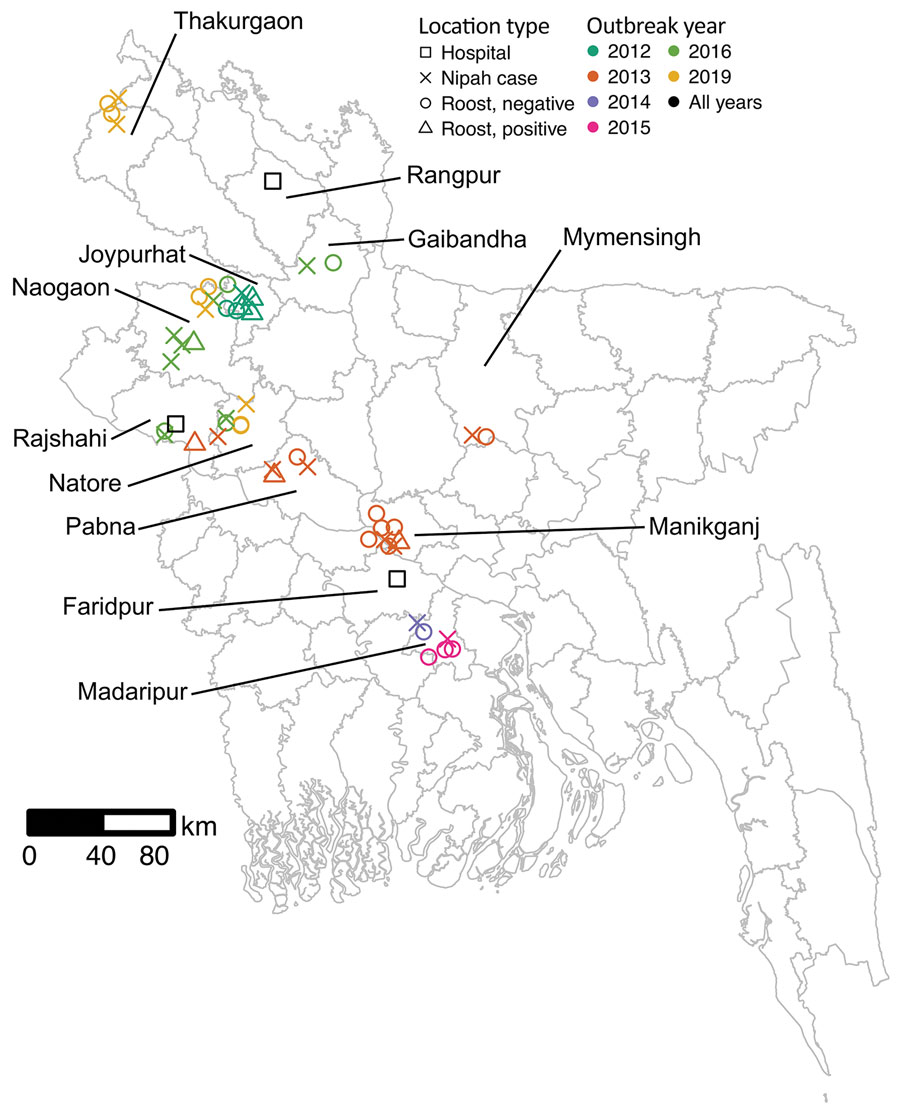Volume 28, Number 7—July 2022
Research
Nipah Virus Detection at Bat Roosts after Spillover Events, Bangladesh, 2012–2019
Figure 1

Figure 1. Locations of human Nipah cases (n = 21) and Pteropus medius bat roosts (n = 30) investigated in Bangladesh, 2012–2019. Roosts with urine aliquots that tested positive for Nipah virus RNA at the first sampling visit are indicated with triangles. Points have been jittered a small amount to increase visibility. Districts with human Nipah virus cases, identified bat roosts, or Nipah surveillance hospitals are labeled.
1These first authors contributed equally to this article.
Page created: April 27, 2022
Page updated: June 18, 2022
Page reviewed: June 18, 2022
The conclusions, findings, and opinions expressed by authors contributing to this journal do not necessarily reflect the official position of the U.S. Department of Health and Human Services, the Public Health Service, the Centers for Disease Control and Prevention, or the authors' affiliated institutions. Use of trade names is for identification only and does not imply endorsement by any of the groups named above.